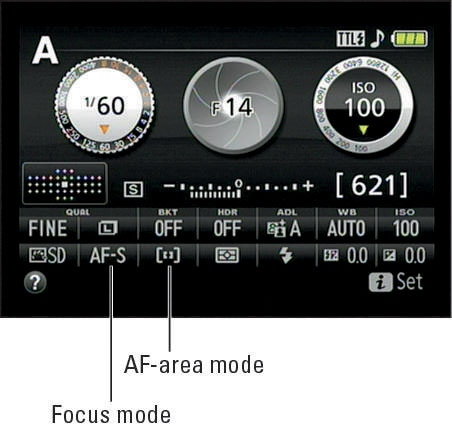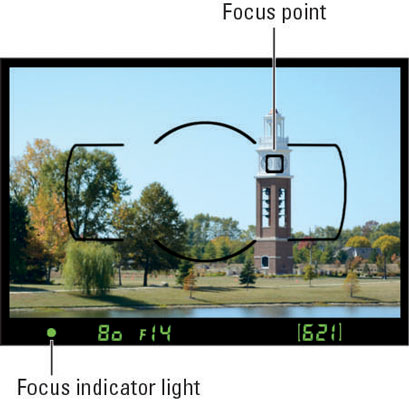You get the best autofocus results if you pair your chosen Focus mode with the most appropriate AF-area mode on your Nikon D5300, because the two settings work in tandem. Here are some combination suggestions:
For still subjects: AF-S and Single Point. You select a focus point, and the camera locks focus on that point when you press the shutter button halfway. (It helps to remember the s factor: For still subjects, Single Point and AF-S.)
For moving subjects: AF-C and 39-point Dynamic Area. You still begin by selecting a focus point, but the camera adjusts focus as needed if your subject moves within the frame after you press the shutter button halfway to establish focus. (Think motion, dynamic, continuous.)
Remember to reframe as needed to keep your subject within the boundaries of the autofocus points, though. And if you want speedier autofocusing, consider switching to 21-point or 9-point Dynamic Area mode—just remember that you need to keep your subject within that smaller portion of the frame for the focus adjustment to work properly.
Autofocus with still subjects: AF-S + Single Point
For stationary subjects, the fastest, most precise autofocus option is to pair the AF-S (single-servo) Focus mode with the Single Point AF-area mode.

After selecting these options (via the Information display control strip), follow these steps to focus:
Looking through the viewfinder, use the Multi Selector to position the focus point over your subject.
The focus point is represented by a black rectangle within the AF-area brackets.
If the focus point doesn't respond, press the shutter button halfway and release it to wake up the camera. Then try again.

Press the shutter button halfway to set focus.
When focus is achieved, the camera displays a green focus light in the viewfinder. Unless you're using the Quiet Shutter release mode, you also hear a beep. (You can disable the sound through the Beep option found in the Shooting/Display section of the Custom Setting menu.)
Focus remains locked as long as you keep the shutter button pressed halfway. If you're using autoexposure (any exposure mode but M), the initial exposure settings are also chosen at the moment you press the shutter button halfway, but they're adjusted as needed up to the time you take the shot.
Press the shutter button the rest of the way to take the shot.
If needed, you can position your subject outside a focus point. Just compose the scene initially so that your subject is under a point, press the shutter button halfway to lock focus, and then reframe. However, if you're using autoexposure, you may want to lock focus and exposure together before you reframe, by pressing the AE-L/AF-L button. Otherwise, exposure is adjusted to match the new framing.
Focus on moving subjects: AF-C + Dynamic Area
To autofocus on a moving subject, select AF-C for the Focus mode and choose one of the Dynamic Area options for the AF-area mode.
The focusing process is the same as just outlined, with a couple exceptions:
When you press the shutter button halfway, the camera sets the initial focusing distance based on your selected autofocus point. But if your subject moves from that point, the camera checks surrounding points for focus information.
Focus is adjusted as needed until you take the picture. You see the green focus indicator light in the viewfinder, but it may flash on and off as focus is adjusted. The beep that you usually hear when using the AF-S Focus mode doesn't sound in AF-C mode, which is a Good Thing—otherwise, things could get noisy because the beep would sound every time the camera adjusted focus.
Try to keep the subject under the selected focus point to increase the odds of good focus. But as long as the subject falls within one of the other focus points, focus should be adjusted accordingly. Note that you don't see the focus point actually move in the viewfinder, but the focus tweak happens. You can feel and hear the focus motor doing its thing, if you pay attention.
By default, the camera doesn't let you take the picture until focus is achieved. To change this behavior, head for the AF-C Priority Selection option, found in the Autofocus section of the Custom Setting menu, and change the setting to Release.
Getting comfortable with continuous autofocusing takes some time, so it's a good idea to practice before you need to photograph an important event.

